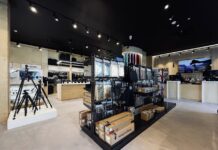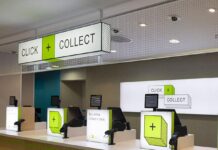As we approach summer sales, and brands and consumers alike face challenging economic headwinds, many online retailers are ‘getting physical’ when it comes to selling their products. Known as ‘bricks and clicks’, this trend sees brands marrying the mass power of e-commerce with the physical allure of the in-store experience. Whilst generating clicks to drive online sales is more achievable for many small business owners, the physical, in-store ‘bricks’ component remains largely inaccessible, particularly for emerging brands who are keen to create a brand presence in prime city locations.
However, despite soaring rents in hot city spots, rising business rates, and the impact of inflation, bricks-and-mortar shopping is on the rebound, with more UK stores opening than closing compared to the pandemic years of 2020-21. A recent survey revealed that brands that have been experimenting with a pop-up shop reported a 46% increase in sales, a 51% rise in market visibility and 66% greater brand awareness. E-commerce brands that blossomed during lockdown are looking for ways to introduce flexible, low-risk retail pop-ups to meet changing consumer demand.

The retail pop-up economy
Traditionally, pop-ups have taken up floor space in an existing retailer or an empty commercial space, and timeframes can vary from several weeks to a couple months. While effective, these types of rentals can be cost-prohibitive for many brands, and can also mean a larger commitment, and therefore risk, that emerging brands might not be willing or able to undertake. This is why brands are taking to online marketplaces to tap into commercial spaces that can be rented by the hour.
🏆
The 2024 Creative Retail Awards are open for entries.
The Creative Retail Awards are much more than a mere accolade; they represent the pinnacle of achievement in the retail industry. Garnering a nomination or winning one of these awards is a testament to innovation, excellence, and leadership.
www.creativeretailawards.com
Brands looking to plan a pop up that’s a day or a few days long can now book a space that suits their shorter time frame needs. This can also allow the existing retailer or commercial space owner to make passive income while the e-commerce brand can identify and utilise spaces that help to engage their customer base, build trust, and enhance visibility with their target demographics.
Why pop-up?
It’s not just new brands that can make the most of pop-up spaces. Established retailers can also adopt retail pop-ups into their business model to test out new locations in different cities, or even countries, as it is a smaller risk to the business. With this flexible model, brands can further capitalise on seasonal sales, engage loyal customers, and enhance the customer experience through novelty. It’s an opportunity for businesses to change the format for shoppers and provide an elevated, personable brand experience. For example, online giants such as Boohoo and Shein tapped into the pop-up space earlier this year as the multi-million dollar businesses sought to build brand loyalty and garner social media attention with in-store experiences.
Online venue marketplace Peerspace enables growing brands to book spaces in high traffic areas that may otherwise be cost prohibitive. Peerspace provides a unique solution for businesses to rent bricks-and-mortar locations by the hour for pop-up shops and events, helping them get in front of customers without the need to pay monthly rent.
This solution allowis brands to tap into high-cost and high-traffic areas for a fraction of the price, such as affluent areas of London including Mayfair and Marylebone. Sustainable jewellery brand ByGlaze recently hosted a pop-up in an elegant gallery space in Mayfair. The brand, which creates sustainable and ethically produced minimal jewellery, hosted a 3-day pop up in a space located steps from the likes of Vogue House and Bond Street’s luxury shops. ByGlaze even brought in a partner company for vintage shopping, and held a yoga class led by instructor–and ByGlaze collaborator–Cat Meffan to give their guests plenty of reason to attend and engage with the brand.
The UK retail landscape is ever-changing, and more brands are trying to get a piece of the pie. Retail pop-up stores are proven to provide a unique opportunity to incubate and drive revenue as consumers are on the hunt for more and more in-store and in-person experiences, forcing retailers to get creative and offer experiential and immersive stores. Pop-ups are a great way to build brand presence, as the halo effect of having a physical store gives greater density to online sales. Pop-up shops don’t just have to be about selling product either – they can be spaces for events, launch parties, book signings and more.
The traditional retail store model is a relic. Stores can now pop up in a day, turn into a concert at night, or provide the coolest venue to capture viral social media content. The hybrid experience of a retail pop-up, combining the power of ‘bricks and clicks’ offers the best of both shopping worlds.















